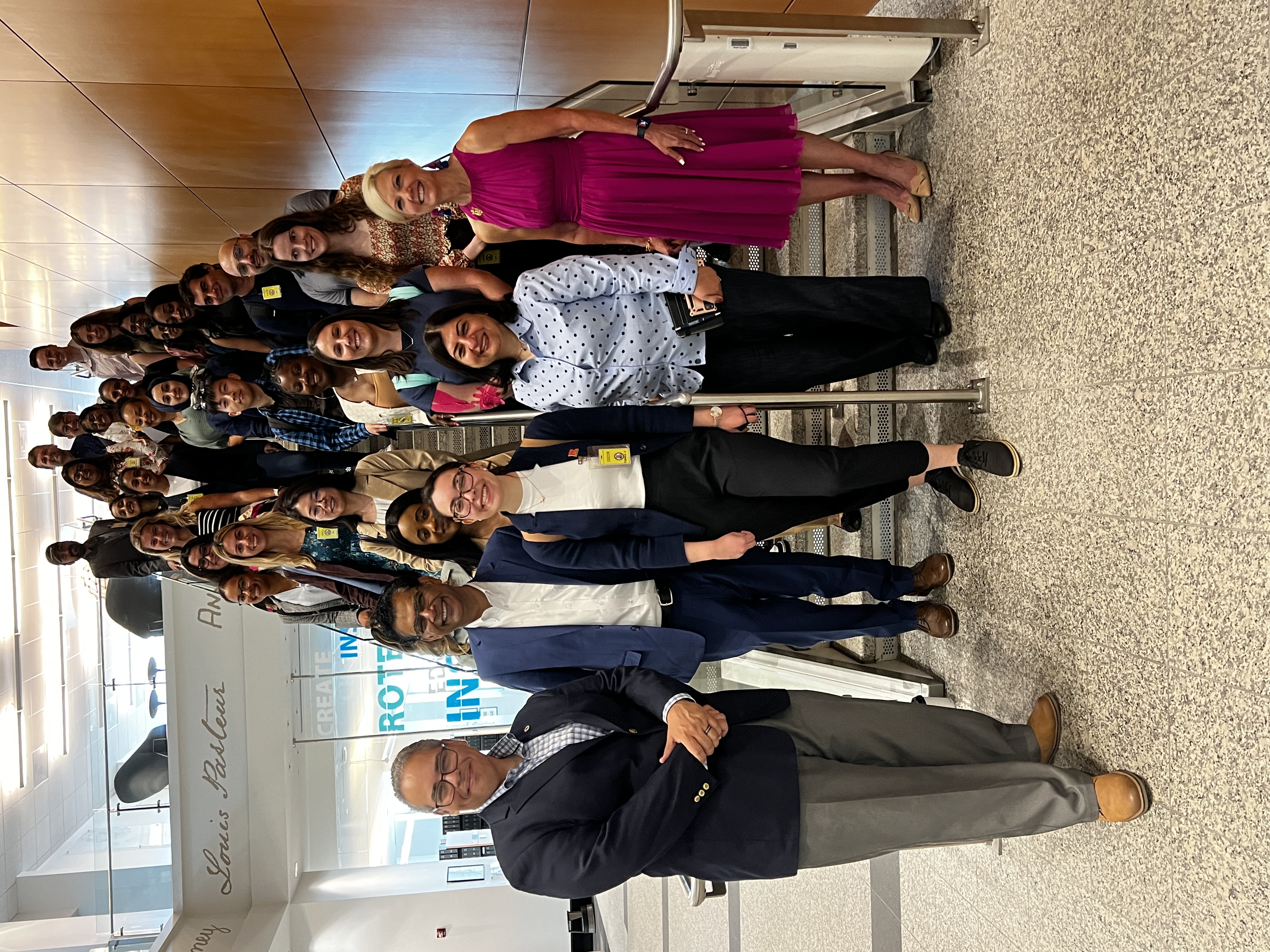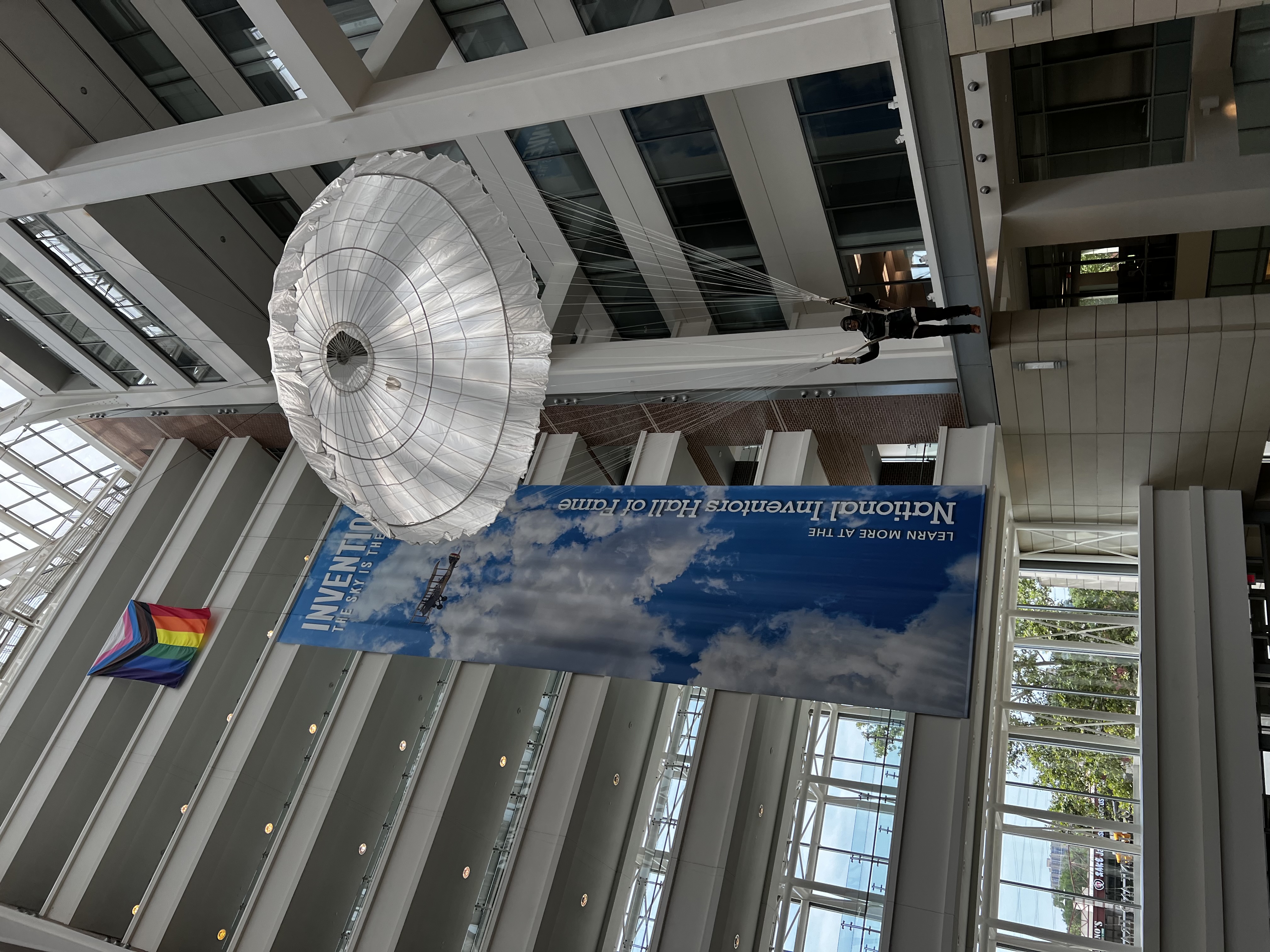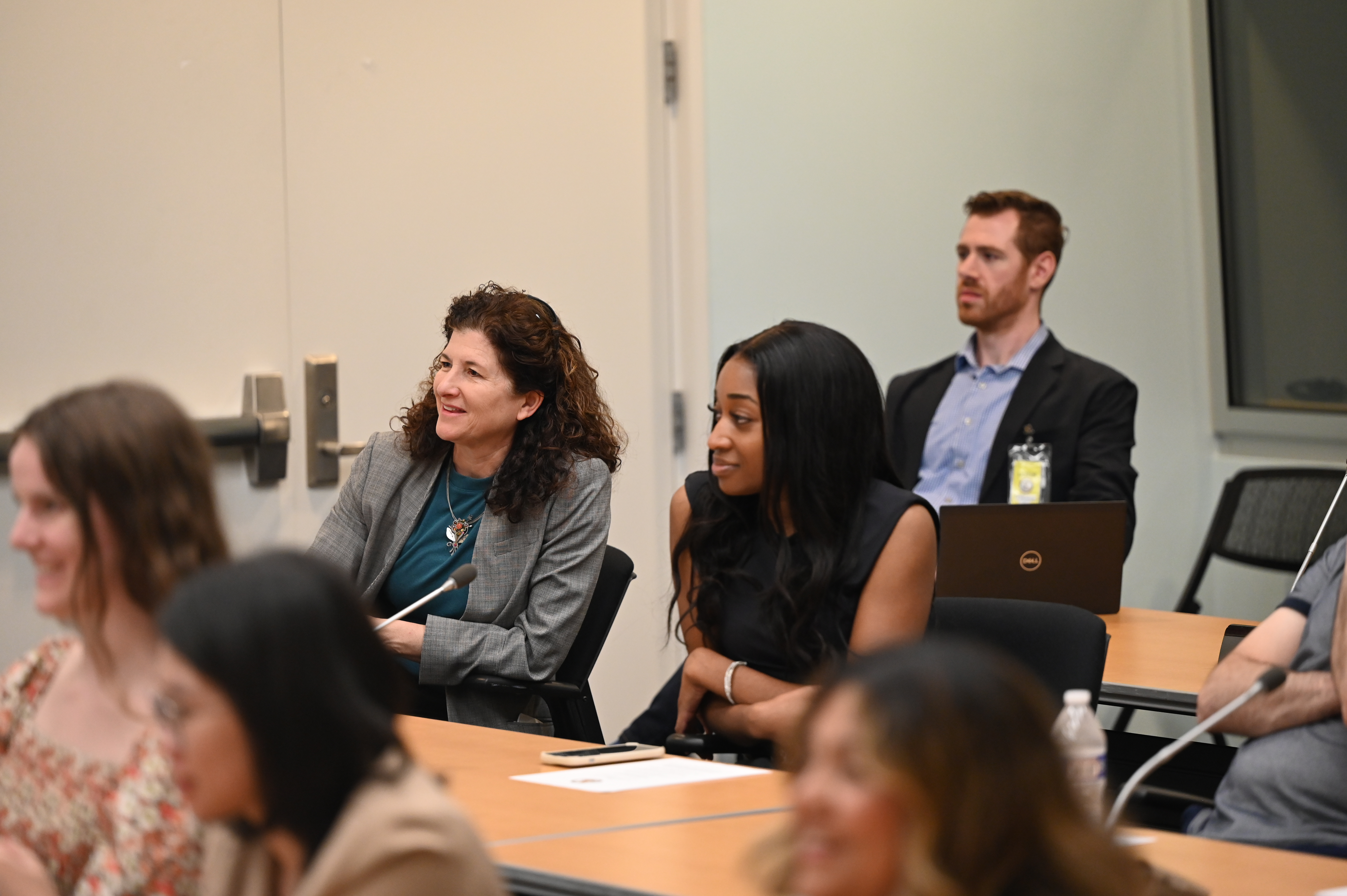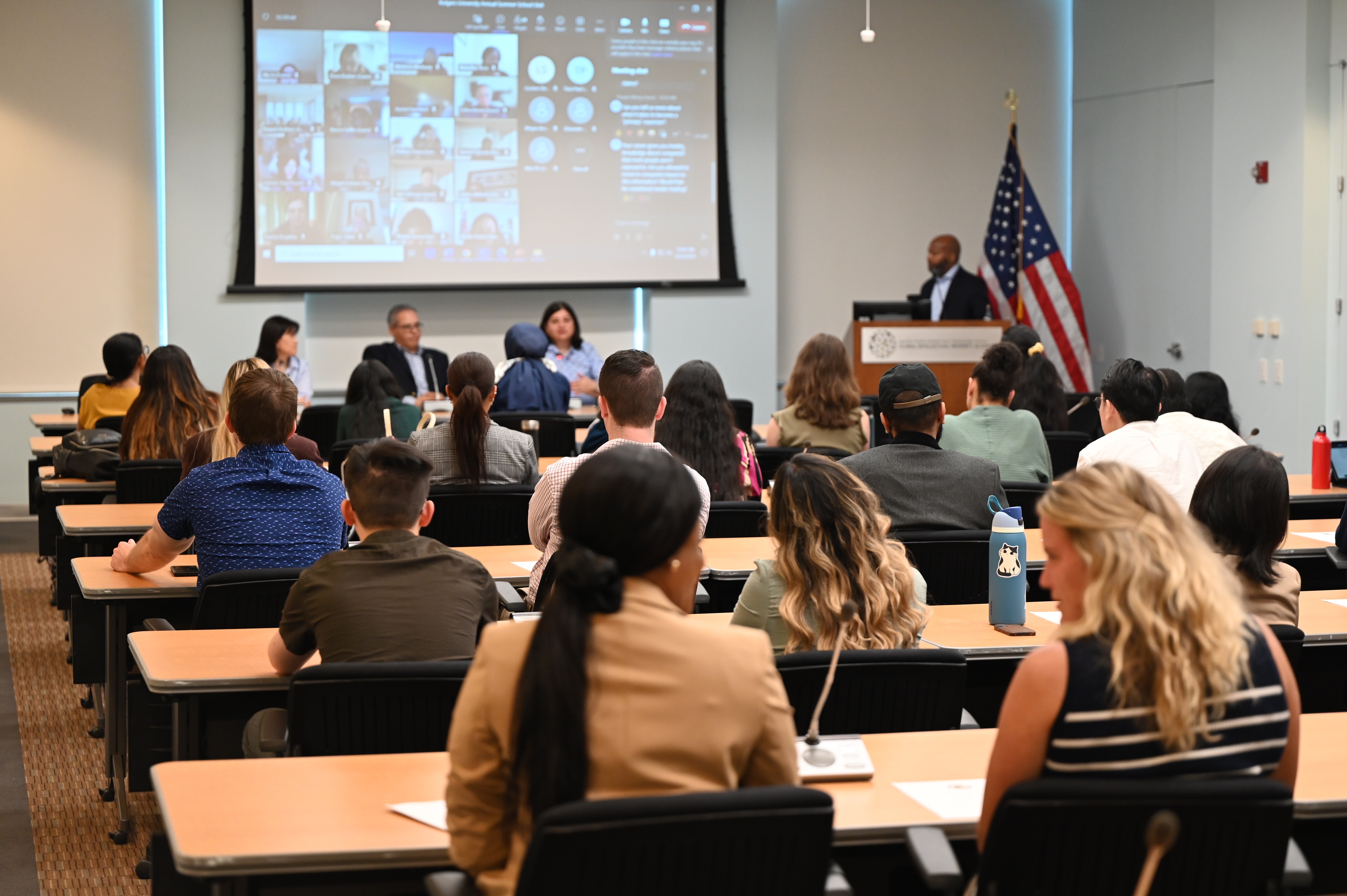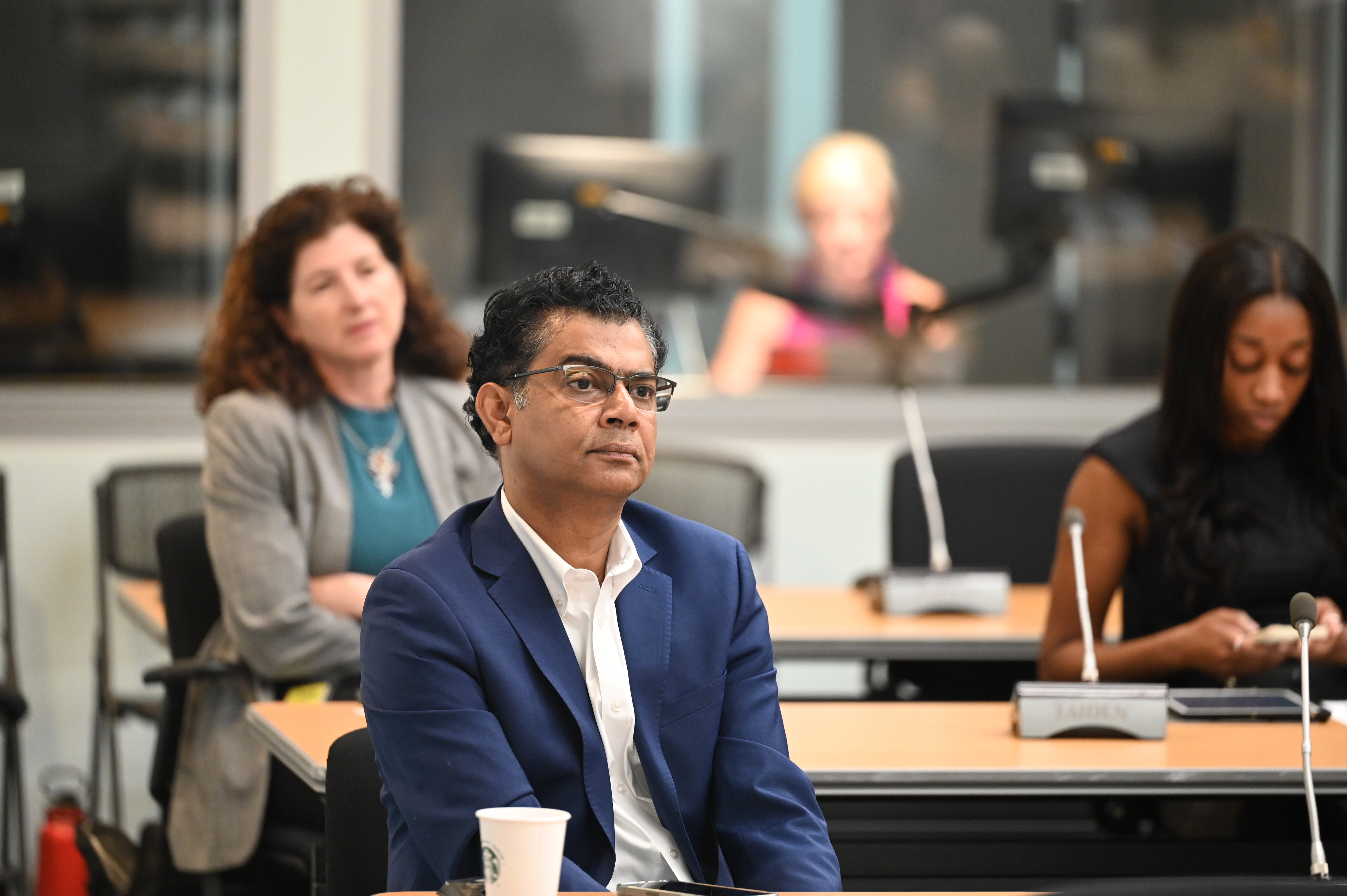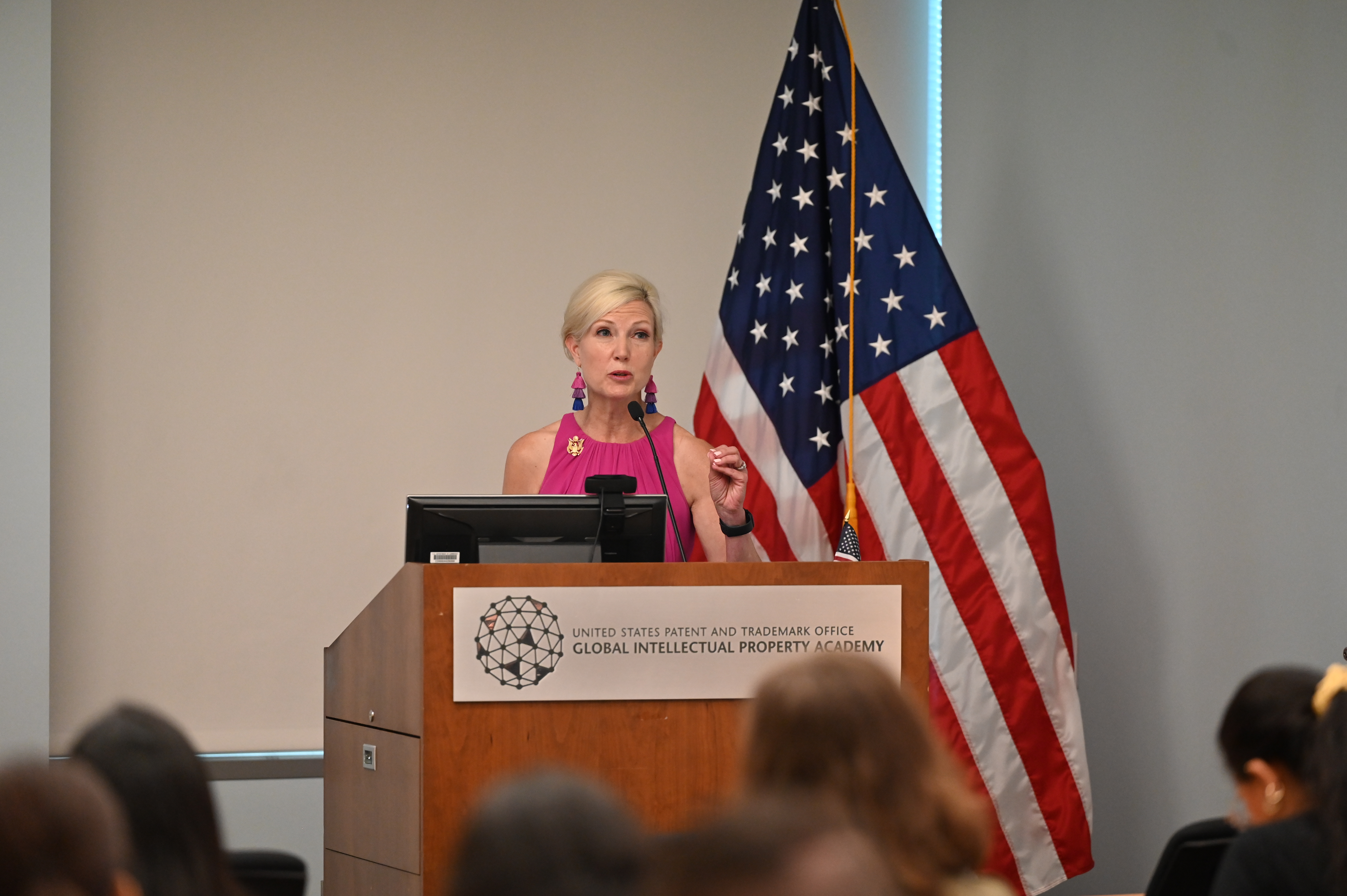On Tuesday, June 25th, students in the MBS course Fundamentals of Intellectual Property (IP) embarked on a class field trip. In the early morning hours, they boarded a bus at the Rutgers Inn and Conference Center and made the long—yet worthwhile—journey to the United States Patent and Trademark Office (USPTO) in Alexandria, Virginia.
This is a highly anticipated yearly trip for students in the course Fundamentals of IP, instructed by technology transfer and IP expert Dr. DJ Nag. Students visit the beautiful office located in Alexandria and are treated to a day of customized lectures from USPTO professionals, sharing valuable insight into IP, patents, and trademarking. It was a day for students to make and maintain lasting connections with USPTO professionals.
The USPTO grants U.S. patents and registers trademarks. Each year, the office receives over 650,000 patent applications.
The day started with an executive welcome from Elizabeth Dougherty, Director of the Eastern Regional Outreach Office. Next, Sonya Wright, Technical Information Specialist, treated the group to a tour of the Public Search Facility. At this facility, the USPTO team helps members of the public look up patents and register trademarks. The Public Search Facility showcases the first ever patent and features a wall of inventors, inscribed with the names of those whose innovations have changed the world—including Thomas Edison, Alexander Grahm Bell, and Walt Disney.
Following the tour was a day of animated discussions. Here are some of the highlights:
History of the U.S. Patent and Trademark Office with Rebekah Oakes, Historian, Office of the Chief Communications Officer
The USPTO is an office rich with a history. Oakes discussed the historical context of innovation, noting that innovations throughout history demonstrate what was important to the public at any given point in time. Oakes also discussed the history and evolution of the IP system, including pivotal moments such as the Patent Act of 1863, the Lanham Act, and the America Invents Act.
A Day in the Life of a Patent Examiner – A Dialogue with Sahar Javanmard, Primary Patent Examiner; Ramon Mercado, Primary Patent Examiner; and Jeanette Parker, Primary Patent Examiner; moderated by Alford Kindred, Technology Center Director
Three primary patent examiners discussed their professional backgrounds and the details of their work.
To evaluate claims, patent examiners must understand the invention and scope of the claim. Patent examiners search previous claims to find prior art demonstrating whether or not the claim is novel.
Each primary patent examiner is assigned a different specialized field. The panelists discussed the role of artificial intelligence in their work, and shared tips on what keywords and search strategies to use when finding prior art.
Working as a patent examiner, said Dougherty, allows you to serve the United States of America and move innovation forward. This is a great opportunity for those who work in industry who may be looking for a career transition.
A Day in the Life of a Trademark Examining Attorney with Susan Hayash, Managing Attorney, Trademarks
Hayash explained the role of a Trademark Examining Attorney. A trademark may be the most important piece of property owned by a company, she explained, because it represents their distinction.
Hayash explained that a trademark must be recognizable by consumers. They are primarily reserved for a word, phrase, symbol, design, or a combination of these things.
Patent Risk Mitigation with Dan McCurdy, Chief Executive Officer, RPX Corporation
Fundamentals of IP course instructor Dr. Nag sat down for a fireside chat with Dan McCurdy, Chief Executive Officer of RPX (Rational Patent Exchange) Corporation, to discuss patent risk mitigation.
RPX Corporation brings companies together to solve patent risks that they face in common. McCurdy explained the different actions that RPX takes to resolve or prevent patent disputes.
This is a rapidly-changing industry, said McCurdy, that requires constant learning and problem-solving.
USPTO Outreach and Engagement: Resources, Programs, and Initiatives with Jamie Boston, Director, Council for Inclusive Innovation; Grant Corboy, Staff Attorney, Patent Pro Bono Program Administrator Office of Enrollment and Discipline; and Maggie Dressel, Education Program Specialist, Community Engagement Office; moderated by Robin Hylton, Special Program Examiner, Office of International Patent Legal Administration
Boston, Corboy, and Dressel each presented an overview of their work in outreach and engagement.
They each highlighted the importance of supporting inventors from a young age. Scientists need to share their knowledge of IP, ultimately raising cultural awareness of IP.
International Intellectual Property Protection, Enforcement, and Education with Deborah Lashley-Johnson, Acting Director, IP Attaché Program, Office of Policy and International Affairs; Brandon Richie, Office of Policy and International Affairs; and Robin Hylton; moderated by Jim Moore, Staff Attorney, Office of Government Affairs
Speakers highlighted the roles and responsibilities within the USPTO relating to international IP. Various roles within the agency include education on how to examine international applications, knowing patent laws of various countries and providing recommendations on policies, and providing services to attachés around the world.
The day concluded with a tour of the National Inventors Hall of Fame Museum, located within the USPTO Campus, Madison Building. This museum honors inventors whose innovations have changed the world.
Visiting the USPTO campus offers students a unique opportunity to explore and learn.
“The campus of the patent office is gorgeous,” said MBS student Skyler Vincent, “there's so much information here.”
Overall, the Fundamentals of IP class is beneficial for students from a wide variety of academic backgrounds.
“[A student in] any concentration can file a patent,” said MBS student Raquel Baumann. “I have a patent pending for what I’m working on currently in my career. It provides insight into the steps I will take to file the patent.”
“I’m in an industry where we have the opportunity to file patents,” said MBS student Alanna Turco, who works in the cosmetic industry, “but I never knew how to go about it.” Learning the steps to filing a patent and taking a deep dive into the litigation process has been helpful, said Turco.
To learn more about the course, read about the 2023 trip to the USPTO.
